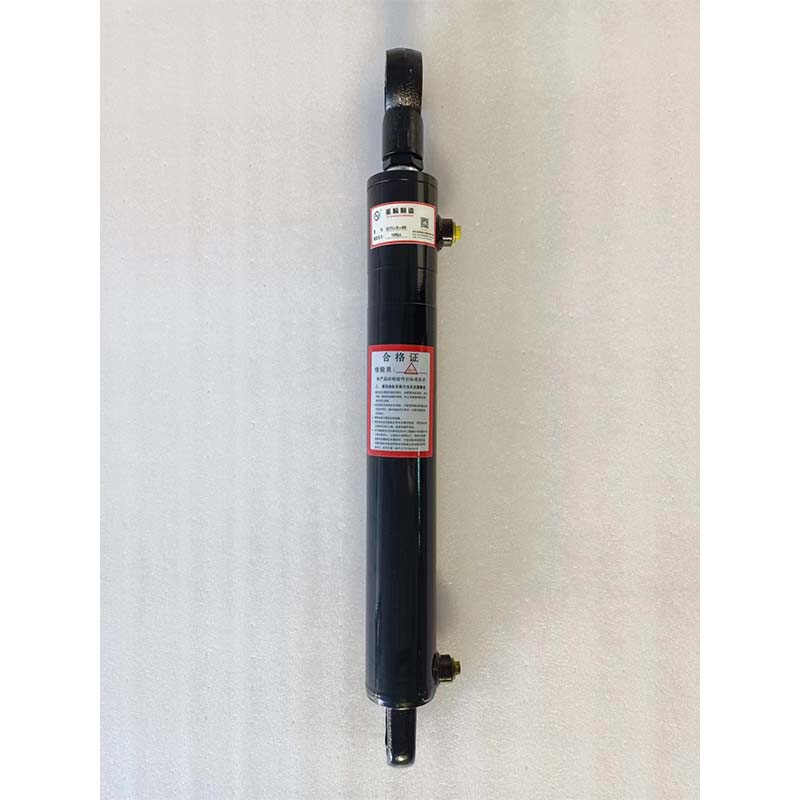Jul . 25, 2024 05:28 Back to list
Enhancing Precision in Hydraulic Cylinder Production for Optimal Performance and Durability
Honing a Hydraulic Cylinder A Guide for Manufacturers
Honing is an essential manufacturing process used to improve the internal surface finish of hydraulic cylinders. It is a precise machinning operation that enhances the performance and longevity of hydraulic systems. This article explores the significance of honing in hydraulic cylinder manufacturing, the process itself, and the advantages it offers to manufacturers and end-users alike.
The Importance of Honing in Hydraulic Cylinder Manufacturing
Hydraulic cylinders are crucial components in various applications, ranging from construction equipment to industrial machinery. They convert hydraulic energy into mechanical energy, enabling the movement of heavy loads. A well-designed hydraulic cylinder must have a smooth internal surface to reduce friction and optimize the performance of the hydraulic fluid flowing through it. This is where honing plays a vital role.
Honing improves the geometry of the cylinder bore by correcting imperfections and ensuring that the wall thickness is uniform. This process not only provides a better finish but also enhances roundness and straightness, all of which are critical for the efficient functioning of hydraulic cylinders. Proper honing can significantly reduce failures associated with component wear, leakage, and inadequate sealing, thereby extending the life of the cylinder and improving overall reliability.
The Honing Process
The honing process involves using abrasive stones or tools to remove material from the internal surface of the cylinder. Here’s a step-by-step breakdown of how honing works
1. Preparation Before honing, the cylinder must be adequately cleaned and inspected for any existing damage. This helps to identify any issues that may need addressing before the honing process begins.
2. Selection of Honing Tools Different abrasive stones and honing tools are selected based on the material of the cylinder and the desired finish. The grit size and type of abrasive play a crucial role in determining the quality of the final surface.
3. Honing Operation The honing machine holds the cylinder in place while the honing tool rotates. The tool is then moved in and out of the cylinder bore, applying controlled pressure. This movement allows for even material removal and ensures the desired surface finish is achieved.
honing a hydraulic cylinder manufacturer

4. Measurement and Inspection After honing, the cylinder undergoes rigorous measurement and inspection to ensure it meets the specified tolerances and finish requirements. This can include using micrometers and surface finish measuring instruments.
5. Final Finishing Depending on the application, additional finishing processes such as polishing or coating may be applied to increase the wear resistance and durability of the hydraulic cylinder.
Advantages of Honing
Honing offers several benefits that make it a critical process in hydraulic cylinder manufacturing
- Improved Surface Finish The primary advantage of honing is the superior surface quality it imparts, which leads to enhanced sealing capabilities and reduced wear during operation.
- Enhanced Performance A finely honed cylinder allows for smoother flow of hydraulic fluid, resulting in improved responsiveness and efficiency of the hydraulic system.
- Increased Longevity By minimizing issues such as wear and leakage, honing effectively extends the service life of hydraulic cylinders, reducing the frequency of repairs and replacements.
- Customization Manufacturers can tailor the honing process to meet specific requirements for different applications, allowing for greater versatility in production.
Conclusion
In conclusion, honing is a critical step in the manufacturing of hydraulic cylinders that cannot be overlooked. The process not only improves the surface finish and dimensional accuracy of the cylinders but also enhances their performance and longevity. As industries continue to evolve and demand higher efficiency and reliability, honing remains a fundamental practice that ensures hydraulic systems operate at their best. For manufacturers, investing in quality honing processes is key to delivering high-performance hydraulic cylinders that meet the rigorous demands of modern applications.
-
Custom-Built 2-Post Lift Power Units High-Performance Hydraulic Systems
NewsJun.01,2025
-
High-Performance Hydraulic Damping Cylinders Manufacturer Superior Power
NewsJun.01,2025
-
Custom Dual Loader Hydraulic Cylinders Manufacturer Durable Solutions
NewsMay.31,2025
-
Custom Ladder Rack Hydraulic Cylinders Heavy-Duty & Tailored Solutions
NewsMay.31,2025
-
Tilt Bed Trailer Hydraulic Cylinder Factories Heavy-Duty Custom Solutions
NewsMay.31,2025
-
Premium Car Tailgate Power Units Reliable OEM Solutions
NewsMay.31,2025
